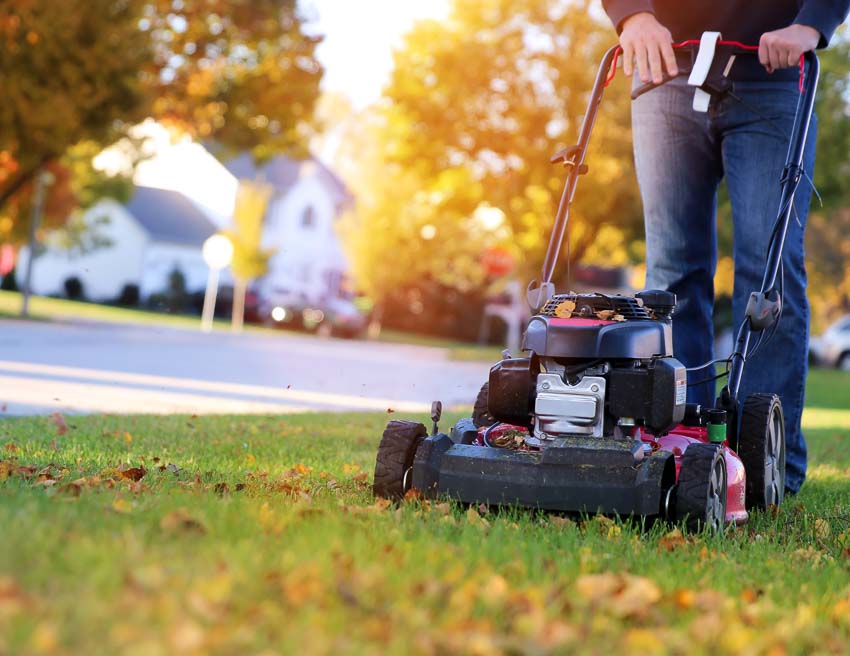Fall brings cooler weather and less daylight, signaling lawns to start slowing their growth. While summer requires intense mowing and watering, fall allows you to take a breath and transition your lawn care to prepare for the coming winter dormancy. Use this fall lawn care guide to learn about proper maintenance for a healthy, vibrant yard in the spring.
This guide will provide an overview of the key lawn care tasks and maintenance tips for fall. We’ll review tips for both Northern and Southern region lawns.
Follow these best practices for fall lawn preparation, and you’ll ensure your yard stays lush and green, even as the temperatures drop.
Fall Lawn Care for Northern Regions
In the northern states, where winter temperatures can be cold and harsh, the daylight hours are shorter. During this period, there’s a high likelihood of snow cover. Therefore, it is important to undertake meticulous fall preparation for your lawn, which we’ll explore in this guide.
Below, we cover the fundamental lawn maintenance tasks and tips that will help your northern yard transition into the winter:
Keep Mowing, Gradually Lowering Blades
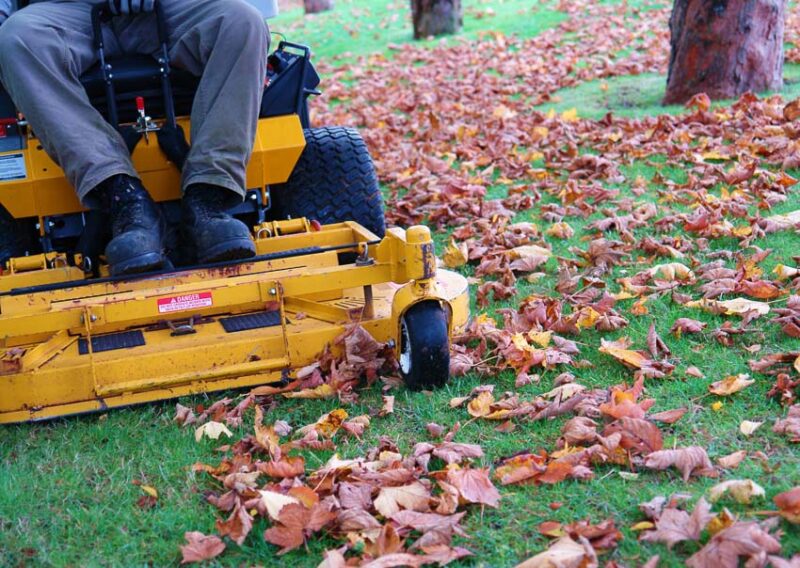
As autumn progresses, it remains vital to keep mowing your lawn regularly. The reduced pace of grass growth allows you to lessen your mowing frequency. However, you should maintain a schedule of mowing every 10 to 14 days to keep your lawn healthy.
An important tip to remember is to slowly lower the mower blades in successive mowing sessions. You’ll want to get them closer to the soil until you achieve you reach 2 to 2.5 inches at the close of fall. This helps prevent diseases and ensures the grass is at an optimal length to face the harsh winter conditions.
Mulch and Recycle Clippings
After mowing, it is beneficial to mulch or collect and dispose of the grass clippings. Either practice will prevent them from smothering the grass underneath, causing bare patches.
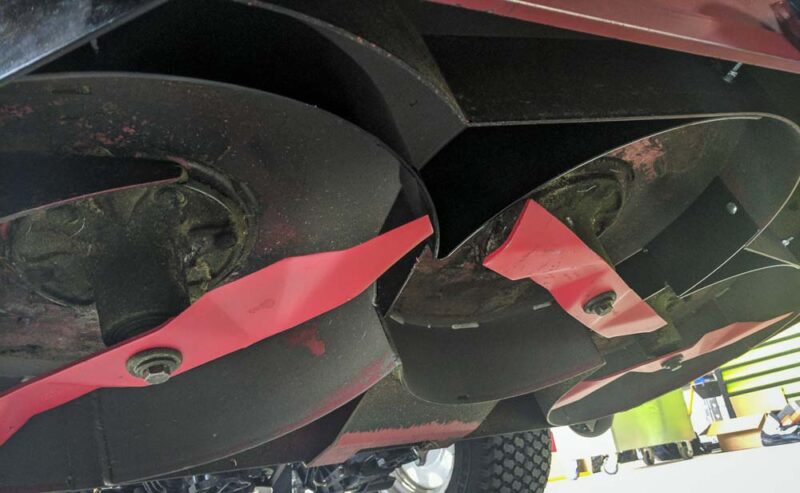
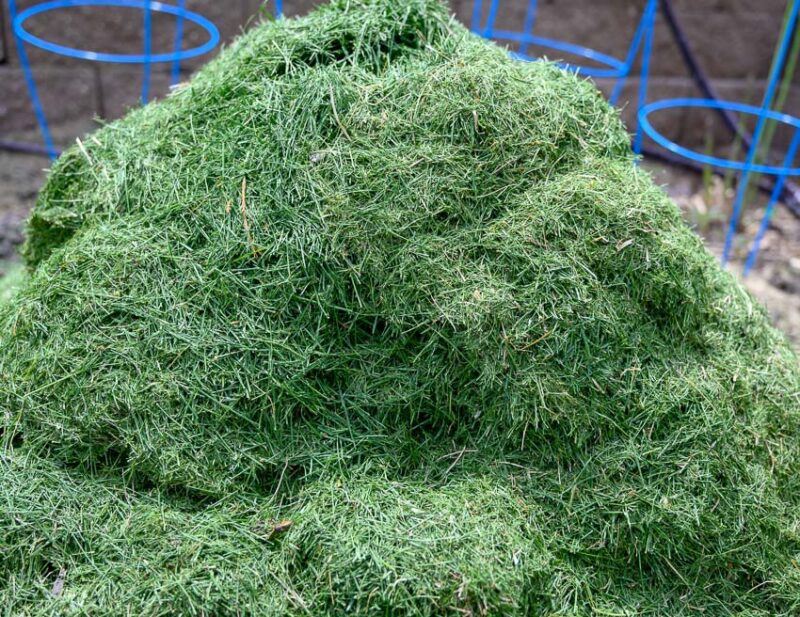
Moreover, mulching blades can help you manage fallen leaves effectively. This type of mowing shreds them into the lawn. That not only prevents patchiness but also contributes additional nutrients to the soil, thus enhancing its fertility.
Overseed and Fertilize
September stands as the prime time to overseed and fertilize cool-season grass lawns. The process of overseeding is essential in filling in the thin or bare spots, encouraging a lush and thick turf before the onset of winter. Choose a seed mix enriched with ryegrass and fescues to get the best results.
After aeration, distribute the seed evenly and follow up with a starter fertilizer high in phosphorus. This will nurture root growth and establishment.
Monitor Irrigation
As temperatures cool, the lawns’ thirst decreases. However, continue to monitor the grass for signs of drought stress. You should provide around 1 inch of water per week, sufficient to dampen the upper 4-6 inches of soil. This practice should be continued till early November. Then gradually cease irrigation, allowing the lawn to acclimatize to the changing weather conditions and prepare for dormancy.
Treat Weeds During Fall Lawn Care
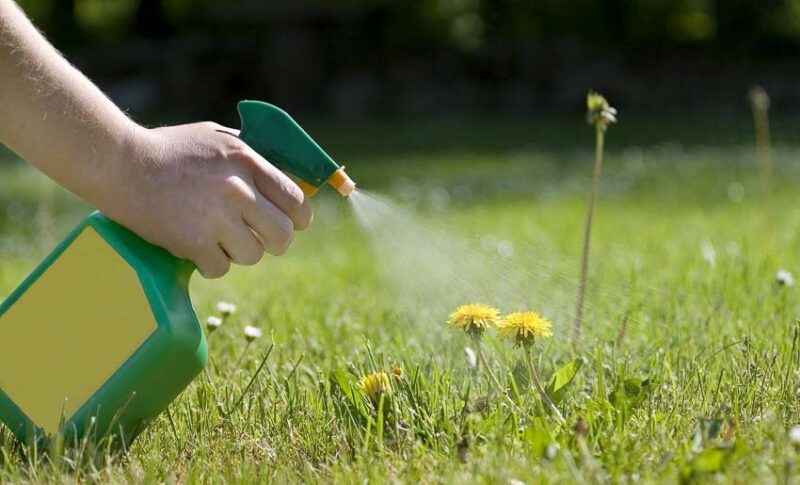
In the autumn months, stay vigilant and tackle persistent weeds like dandelions and wild violets using targeted herbicidal sprays. To preemptively handle potential weed issues, apply herbicides that hinder the germination and growth of weeds during the cooler periods. This is when the desirable grass varieties enter dormancy, ensuring a weed-free lawn in spring.
Rake and Remove Leaves
Continue raking up leaves consistently, or use tools like lawn sweepers or mowers with bagging attachments. Avoid leaving large piles of leaves on the lawn. This obstructs sunlight, leading to the formation of dead patches.
You can further recycle the shredded leaves obtained from mowing, using them as a rich source of compost or mulch.
Prepare for Winter
Towards the end of November, gear up for the final mowing session of the season. Set the mower to the lowest recommended setting according to the type of grass you have in your lawn. A shorter lawn going into winter minimizes the risk of fungal diseases such as snow mold.
As the grass growth subsides, move on to winterize irrigation systems to prevent freeze damage. Also, give your lawn equipment a good cleanup and maintenance check.
Fall Lawn Care for Southern Regions
In the southern regions of the U.S., where winters are milder, lawn care requires a different approach. Although the temperatures remain warmer, a targeted fall regimen helps to maintain a lush lawn that can face the winter months.
Continue Mowing Weekly
Warm-season varieties such as Bermuda and Zoysia grass remain vigorous for a long period into the fall. This requires regular mowing on a weekly basis.
You should maintain a grass height of 2 to 3 inches to ensure a neatly groomed appearance. As leaves begin to drop, you likely need a more frequent mowing schedule to keep a clean lawn.
Overseed Warm Season Grasses
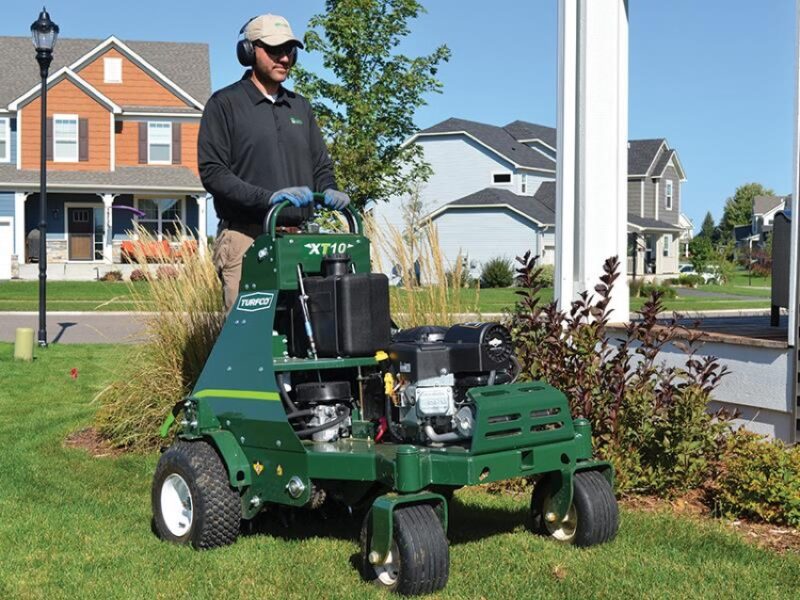
Overseeding lawns with cool-season grass varieties like fescue during September or October ensures a green and vibrant lawn throughout the winter. However, to achieve the best results, it is crucial to cross-reference the optimal seeding dates with your region to tailor the overseeding schedule to your locale.
Control Fall Weeds
Certain weeds, including nutsedge and chickweed, tend to proliferate during the cooler fall weather, posing a threat to southern lawns. To curb their growth and maintain the health of your lawn, use post-emergent products that contain effective ingredients like glyphosate or sulfentrazone, targeting and eliminating these stubborn weeds through spot treatments.
Apply Pre-Emergent Herbicide
In addition to post-emergent herbicides, utilizing pre-emergent products that contain active ingredients such as prodiamine or pendimethalin in the mid to late fall season should be considered. These herbicides control the growth of winter weeds like henbit, chickweed, and annual bluegrass. Each tends to grow as spring approaches.
Reduce Irrigation
As temperatures start dipping in the fall, it’s important to modify your watering schedule to suit your lawn. Gradually reducing the duration and frequency of watering sessions helps to avoid diseases that thrive in excessively moist conditions.
That said, tall fescue lawns might require irrigation even into December. By November, Bermuda grass typically reaches a dormant state, eliminating the need for further watering.
Continue Fertilization
To nurture a healthy and resilient lawn, continue fertilizing warm-season grasses until about 6 weeks before the anticipated first frost of the season. Employ slow-release fertilizers rich in nitrogen to nourish the soil adequately during this time.
Refrain from fertilizing the grass once it enters dormancy in the winter to prevent unwanted growth and other issues.
Leave Fallen Leaves
An effective and natural way to nourish your lawn is to mulch grass and fallen leaves by mowing over them, thereby recycling the nutrients back into the soil. For lawns that have become dormant, allowing the leaves to remain can insulate the grass from winter conditions, serving as a natural mulch that conserves soil moisture.
Additional Tasks for Fall Lawn Care
Towards the end of fall, there are other tasks to prepare your lawn for Spring. Set reel mowers to the lowest settings to cut dormant grass down to the soil line, encouraging healthy growth in spring. Sharpen the blades of your mower for optimum performance and organize the fuel equipment necessary for end-of-season lawn maintenance tasks.
Draining components of the irrigation system such as supply lines and backflow preventers is vital to prevent freezing and damage during the winter months, setting a smooth start for spring lawn care.
Ready for Lawn Care this Fall?
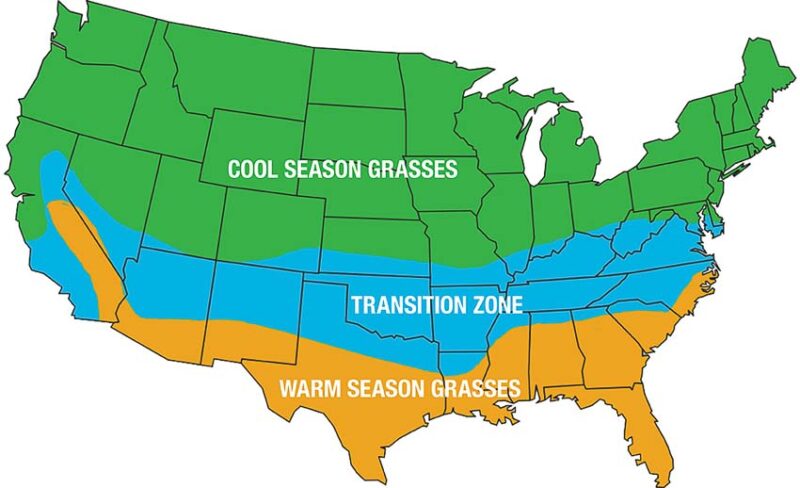
Preparing your lawn properly each autumn will ensure your yard stays healthy and lush year-round. Follow these best practices tailored to grasses in your region .
With the right fall lawn care regime, your turfgrass will thrive from the dog days of summer through winter and will be primed for vigorous spring green-up.
Fall Lawn Care FAQ
When should I stop fertilizing my lawn for fall?
You should stop fertilizing your lawn for the fall around 6 weeks before the first expected frost. This gives your lawn time to absorb the nutrients and harden off properly before the cold weather sets in. Avoid fertilizing too late into the fall, as it can lead to a weak root system and encourage fungal diseases due to the new, tender growth that late fertilization can promote.
Should I dethatch my lawn in the fall?
Yes, fall is a great time to dethatch your lawn, especially for cool-season grasses. Dethatching helps to remove the layer of dead grass and debris that accumulates over time, allowing water, nutrients, and air to reach the soil more effectively.
Ensure that you undertake this activity early in the fall to give your lawn enough time to recover before the onset of winter.
How short should I cut my lawn before winter?
Before winter, you should mow your lawn to about 2 to 2.5 inches high for cool-season grasses and slightly shorter for warm-season grasses. This height helps to prevent snow mold and other fungal diseases that can arise from long, damp grass, while ensuring that it remains long enough to photosynthesize efficiently.
It’s always a good practice to refer to specific guidelines for your grass type.
How do I winterize my irrigation system?
To winterize your irrigation system, start by shutting off the water supply to the irrigation system. Next, drain all the water from the irrigation pipes, valves, outdoor spigots, and sprinkler heads to prevent freezing and subsequent damage. You can use compressed air to blow out any remaining water. Finally, insulate any exposed pipes and shut down the controller or timer to save energy during the winter months.
When should I resume lawn mowing in spring?
You should resume lawn mowing in the spring as soon as your grass begins to grow, which can be determined by the type of grass and the local climate conditions. Generally, you should mow when it reaches about 3 inches, and cut the grass to a height of about 2 to 2.5 inches, promoting thicker and healthier lawn growth as the season progresses.
How do I deal with leaves on my lawn?
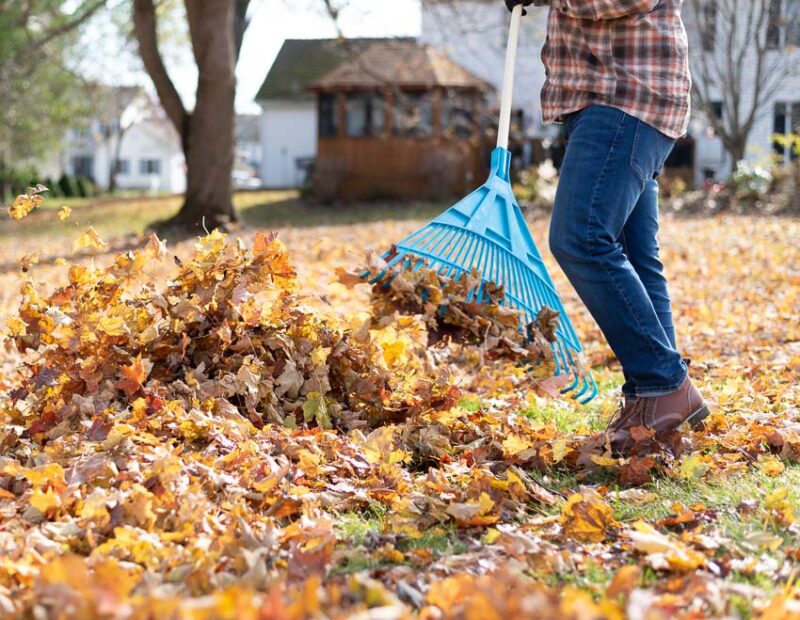
Dealing with leaves on your lawn involves regular raking or using a leaf blower to gather them into piles and then disposing of them appropriately. Alternatively, you can mow over the leaves with a mulching mower to break them down into smaller pieces, which can be left on the lawn to decompose naturally, providing nutrients to the soil.
It is essential to deal with fallen leaves promptly to prevent them from smothering the grass and creating bare spots.

